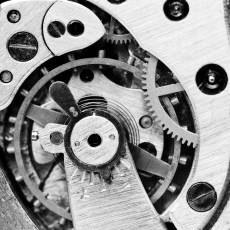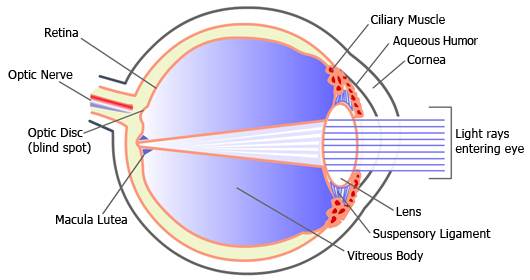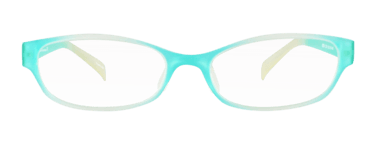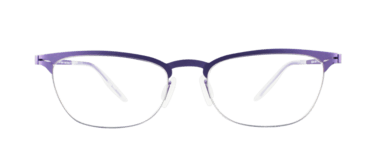The Eye: Anatomy and How it Works
 |
|
Vision is complex; your eyes are composed of more than 2 million working parts. |
The human eye is known as the most complex body organ. It may be small, but it has a stunning amount of working parts. How does the eye work and what are the different parts that allow it to function as it is? Where does vision start?
How Vision Starts
Your vision starts when rays of light reflect off an object and enter your cornea. This part of the eye is a transparent layer that covers the front of your eyes. It is capable of bending (refracting) the rays as they pass through the pupil; the dark circle within the iris. The iris is the colored part of your eyes that surrounds the pupil. Irises come in many different colors, ranging from blue to green to hazel to brown. The pupil dilates and constricts, depending on the amount of light present.
Light rays pass through the eye’s lens. This alters its shape so that it can bend rays to focus on the retina. The retina is a layer of tissue located behind the eye ball which has a lot of light sensitive nerve cells known as cones and rods.
When bright light is introduced, cones offer sharp and clear central vision and can detect the finest details of colors. Rods are responsible for our dark-adapted, scotopic, vision. Both rods and cones are photoreceptors that transform light into electrical impulses. These impulses are then detected and transported to the brain via the optic nerve. The brain is where the image is formed and vision is generated.
The Eye’s Complex Structures
Your eyes are spheres that are almost an inch in diameter and are self cleaning and self lubricating. This well protected structure is very sensitive. An eye ball alone has a lot of complex parts that govern its functions. Here's a cross section of an eyeball with some of its most important parts labeled:

Retina – This part is the lining of the eyeball’s back half part. It is the receiver of images formed by the lens, and is responsible for converting them into signals sent to the brain via the optic nerve.
Optic Nerve – Transports visual information from the retina to the brain.
Optic Disc – Also referred to as the blind spot, because there are no light receptors in this part of the retina, the optic disc is the spot where the retina ends and the optic nerve begins.
Macula Lutea – The small, yellowish central portion of the retina, responsible for providing central vision.
Ciliary Muscle – A ring of muscle that controls accommodation for viewing objects at varying distances and regulates the flow of aqueous humor.
Aqueous Humor – The fluid produced in the eye.
Cornea – The dome shaped, transparent part located at the front of the eye. As light enters the cornea it refracts light before it goes through the lens.
Lens – Located just behind the pupil. It is made up of clear proteins that allow light to be focused properly to your retina.
Suspensory Ligament – Connects the ciliary muscle to the eye's lens.
Vitreous Body – Transparent gelatinous substance that fills the space inside the eyeball between the retina and the lens.
The eye’s surfaces are regularly lubricated by tears. Tears flow from tear glands, located at the eye’s upper corners, and drain through tear ducts, in the eye’s inner. When you blink, you pump tears from the surface of your eye into the tears drainage system.
This is why, when you are about to cry, you begin to blink rapidly as your eyes start to flood with tears. Quick blinking pumps tears into your tear ducts. Tear ducts passes through nasal bone channels which empties tears in the back of your throat. This explains why you can taste your tears or your eye drops. 
Recommended for you












